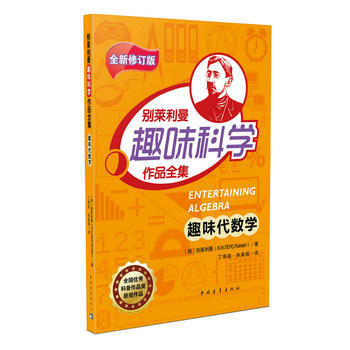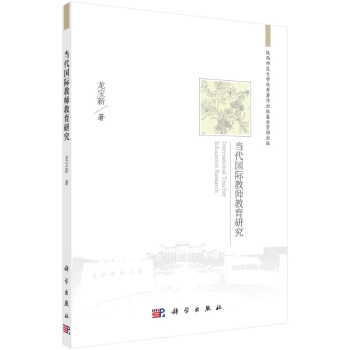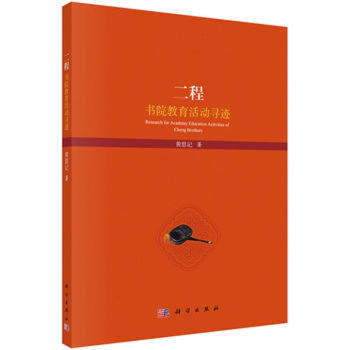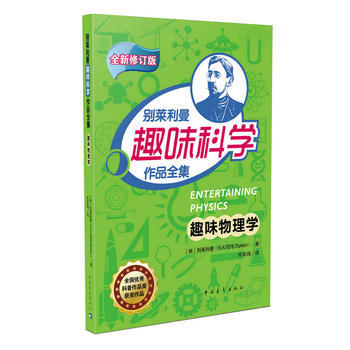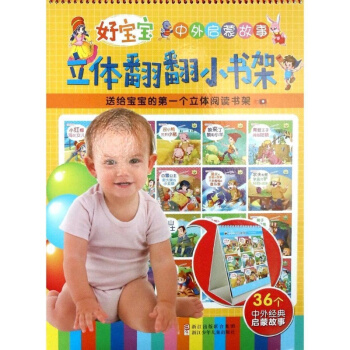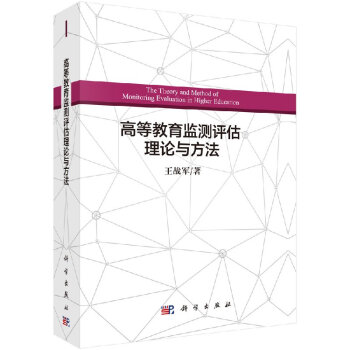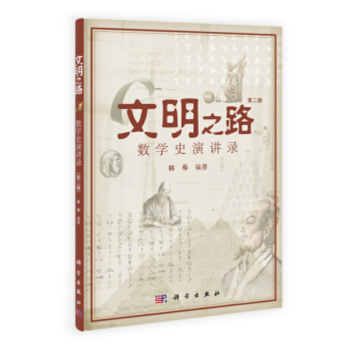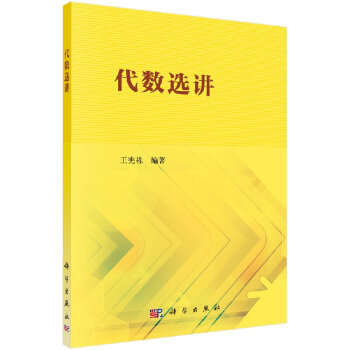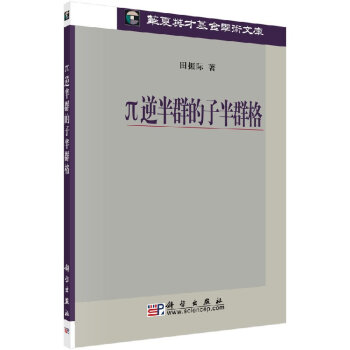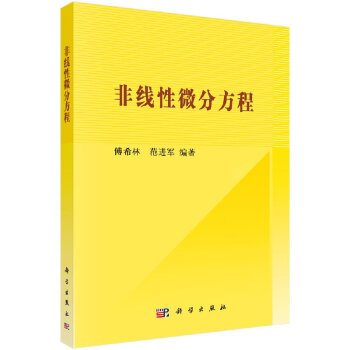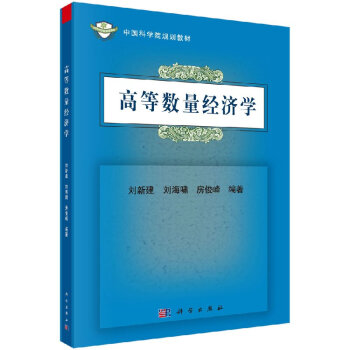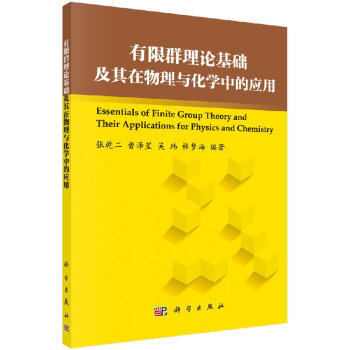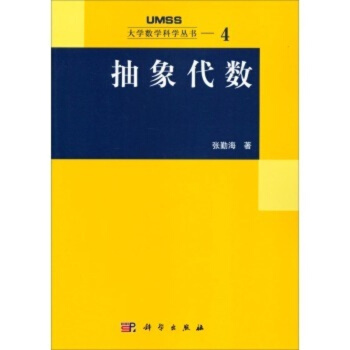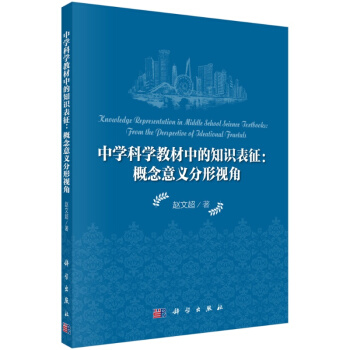

具体描述
本店POD版圖書均在書名下有明顯紅字標注,POD圖書屬於按需定製,您下單購買後我們纔開始印刷,故不可取消訂單。 我們一般會在您下單後的7-10個工作日內完成發貨,請謹慎下單!商品無質量問題不支持退貨,定價和裝幀可能會與原書不同,請以實物為準!詳情請谘詢客服 購買電子版圖書請與客服直接聯係,或者到科學齣版社電子商務平颱直接購買
| 中學科學教材中的知識錶徵:概念意義分形視角 | ||
| 定價 | 78.00 | |
| 齣版社 | 科學齣版社 | |
| 版次 | 1 | |
| 齣版時間 | 2016年09月 | |
| 開本 | 16 | |
| 作者 | 趙文超 | |
| 裝幀 | 平裝 | |
| 頁數 | 268 | |
| 字數 | 300 | |
| ISBN編碼 | 9787030498755 | |
目錄
Contents
序前言
Preface
Chapter 1 Introduction 1
1.1 A Brief Introduction to Ideational Fractals 1
1.2 Background of the Study 3
1.3 Objectives of the Study 7
1.4 Methodology and Data Collection 9
1.5 Terminology 13
1.6 Organization of the Book 18
Chapter 2 Literature Review 21
2.1 Linguistic Studies on SD 21
2.2 Multimodal Studies on SD 36
2.3 Interpretations of Knowle 45
2.4 Summary 54
Chapter 3 Theoretical Framework 56
3.1 The Framework for Analyzing Knowle Representation 57
3.2 SFL’s Multidimensional Interpretation of Language 60
3.3 SFL’s Exposition of Ideational Fractals 67
3.4 Semiotic Integration and Inter-semiotic Ideational Fractals 73
3.5 Martin’s Systemic Functional Exposition of Genre 80
3.6 Summary 82
Chapter 4 Clause Complexing in Knowle Representation 84
4.1 The Symbolic Representation of ICCs 84
4.2 The Structuring of OEMICCs 87
4.3 The Structuring of PMICCs 113
4.4 Summary 127
Chapter 5 Image-language Integrating in Knowle Representation 131
5.1 Identification of the Visual and Verbal Resources 131
5.2 The Integration of Images with Captions 140
5.3 The Integration of Images with Labels and Glosses 160
5.4 Summary 169
Chapter 6 Genre Complexing in Knowle Representation 171
6.1 AnAccount of the Genres Involved 171
6.2 Genre Complexing via Extension 173
6.3 Genre Complexing via Elaboration 185
6.4 Genre Complexing via Enhancement 197
6.5 Summary 210
Chapter 7 Conclusion 212
7.1 Major Findings of the Current Study 212
7.2 Significance of the Current Study 216
7.3 Limitations and Suggestions for Future Research 218
Appendices 220
References 229
List of Tables
Table 1.1 TheAmerican MSSTs used for the current study 10
Table 1.2 Statistics about the textbook data 12
Table 2.1 Key foci of dialogue between code theory and SFL(Martin & Maton, 2013: 1) 50
Table 3.1 Semiotic dimensions—type, relation, and orders (values) (after Matthiessen et al., 2010: 191) 61
Table 3.2 Modes of meaning and modes of expression (Matthiessen, 2007c: 778) 62
Table 4.1 Basic types of clause complex (Halliday & Matthiessen, 2004: 380) 85
Table 4.2 The distribution of the six types of OEMICCs 88
Table 4.3 The uses of the top 9 favored structuring patterns of OEMICCs 112
Table 4.4 The distribution of the four types of PMICCs 115
Table 4.5 The uses of the top 10 favored structuring patterns of PMICCs 126
Table 4.6 The distribution of the ICCs in the three sets of American MSSTs 127
Table 4.7 The frequencies of the logico-semantic relations manifested by the ICCs concerned in the three sets of MSSTs 129
Table 5.1 The distribution of the captioned visual images in the textbookdata 134
Table 5.2 The distribution of the image-caption relations in the textbook data 141
List of Figures
Figure 1.1 Vertical discourse as complementarity and cline (Martin, 2011b: 9) 17
Figure 3.1 An SFL-oriented framework for analyzing knowle representation 57
Figure 3.2 The stratal organization of context and language in terms of metaredundancy (after Martin, 2008: 32) 64
Figure 3.3 Realization in relation to instantiation (all strata instantiate) (Martin, 2010: 22) 67
Figure 3.4 Ideational fractals in different semantic environments (Halliday & Matthiessen, 1999: 223) 68
Figure 3.5 Acline of integration in relation to intermodality(Matthiessen, 2009a: 16) 76
Figure 4.1 The categorization of the OEMICCs in the three sets ofAmerican MSSTs 87
Figure 4.2 The distributions of OEMICCs in the three science subjects 91
Figure 4.3 The categorization of the PMICCs in the three sets ofAmerican MSSTs 114
Figure 5.1 The densities of each category of the visual images (in terms of type) in the three science subjects 135
Figure 5.2 The densities of each category of the visual images (in terms of function) in the three science subjects 136
Figure 5.3 A case of image-language integrating with verbal resources identified (Biggs & Zike, 2005: 77) 138
Figure 5.4 An example of captions and sub-captions comprising two parts (Trefil et al., 2007a:194) 140
Figure 5.5 The proportions of the elaborating cases of image-caption integrating in the three science subjects 142
Figure 5.6 The proportions of exposition to elaboration 143
Figure 5.7 An example of image-caption exposition for demonstrating entities (Horton et al., 2005: 27) 144
Figure 5.8 An example of image-caption exposition for demonstrating processes (Ezrailson et al., 2005b: 16) 144
Figure 5.9 The proportions of exemplification to elaboration 145
Figure 5.10 A case of exemplifying a categor y of entities in the image (Eddleman, 2007: 326) 145
Figure 5.11 A case of exemplifying a theoretical thesis in the image (Trefil et al., 2007c: 45) 146
Figure 5.12 The proportions of clarification to elaboration 148
Figure 5.13 A phrasal caption clarified by visual images (from Hsu , 2007: 262) 148
Figure 5.14 A hybrid image clarifying a verbal caption (Trefil et al., 2007b: 197) 149
Figure 5.15 The proportions of the extending cases of image-caption integrating in the three science subjects 150
Figure 5.16 An example of image-caption integrating through augmentation (Trefil et al., 2007a: 119) 151
Figure 5.17 An integrating example with caption augmented by image (Eddleman , 2007: 272) 152
Figure 5.18 An example of image-caption integrating with divergence (Trefil et al., 2007c: 282) 153
Figure 5.19 The proportions of the enhancing cases of image-caption integrating in the three science subjects 154
Figure 5.20 Two examples of image-caption integrating through causal enhancement 155
Figure 5.21 An example of image-caption integrating through temporal enhancement (Trefil et al., 2007c: 457) 156
Figure 5.22 An example of image-caption integrating through the enhancement of purpose (Biggs & Zike, 2005: 16) 157
Figure 5.23 A comparison in between different science subjects 158
Figure 5.24 A comparison within the same science subject 159
Figure 5.25 An example of image-label integrating through exposition (Daniel & Zike,2005: 81) 160
Figure 5.26 An image with labels construing abstract things (Lillie et al.,2005:83) 161
Figure 5.27 Examples of image-label integrating through exemplification (Trefil et al., 2007c: 45) 162
Figure 5.28 An example of image-label integrating through spatial enhancement (Snyder & Zike, 2007: 19) 163
Figure 5.29 Examples of image-gloss integrating through elaboration and extension 165
Figure 5.30 Examples of image-gloss integrating through enhancement (Feather Jr.& Zike,2005a:160) 168
Figure 6.1 The implication sequence of the dissolution of ionic compounds 180
Figure 6.2 The implication sequence of the dissolution of molecular compounds 180
Figure 6.3 The implication sequence of the formation of a rotating system 183
Figure 6.4 The conditional implication sequence of the formation of hurricanes 184
Figure 6.5 The implication sequence of the promotion of density 194
Figure 6.6 The implication sequence of how the change of an object’s density is related to its floating and sinking in a fluid 196
Figure 6.7 The elaborating mode of genre complexing realized in Text 9 197
Figure 6.8 The reasoning processes concerning the danger of atherosclerosis 200
在綫試讀
Chapter 1
Introduction
In modern schooling contexts, pedagogic discourse, verbalized or visualized, is a crucial channel through which students acquire disciplinary knowle. Textbooks, as one major type of pedagogic discourse, have been investigated in the linguistic field from different perspectives. However, how knowle is represented in them remains an issue calling for answers. Intended to be one additional contribution to the solution of the issue, the study in this book looks into the pedagogic scientific discourse in middle school science textbooks (henceforth MSSTs), proposing that knowle representation therein is a semantic enterprise accomplished synergistically through the work of lexicogrammatical structures, visual representations, and genres. Specifically, the current study purports to bring out how knowle in three sets of American MSSTs is represented through clause complexing, image-language integrating, and genre complexing. As the first step of the study, the present chapter is designed to make explicit the background, the objectives, the methodology, and the data collection of the research, followed by a specification of the term ‘scientific discourse’ (henceforth SD) and the organization of the entire book. However, since the entire study is carried out from the perspective of ideational fractals, a term which is not very familiar to researchers in the linguistic field, the present chapter will first provide a brief introduction to the term.
1.1 A Brief Introduction to Ideational Fractals
In this book, the term of ideational fractals is derived from systemic functional linguistics (henceforth SFL). Within the term, the notion of fractal originates from mathematician Mandelbrot’s work on self-similarity in material systems (see Matthiessen et al., 2010). Etymologically, the word, coined by Mandelbrot, comes from the Latin adjective fractus, which has the same root as fraction and fragment and means irregular or fragmented (see Mandelbrot, 1977: 4). The mathematician used the word to describe many of the seemingly complex forms found in nature, for example, the forms of coastlines, snowflakes, and clouds. To Mandelbrot (1977), many fractal forms are of the feature of self-similarity, where self-similarity is taken as a scale-invariant property, meaning that “the object or phenomenon under consideration is found to remain (locally) identical to itself after application of a dilatation or contraction” (Nottale, 1993: 40).
As a theoretical term,‘fractal’ in SFL is used to refer to“a general semantic pattern that is manifested throughout the semantic and lexicogrammatical systems in different environments” (Matthiessen et al., 2010: 100). This means that SFL has borrowed the notion of ‘fractal’ from Mandelbrot’s work on self-similarity in material systems for the purpose of characterizing self-semilarity in semiotic systems. According to Matthiessen et al. (2010), fractals in the social semiotic system of language operate within all metafunctions.
Within the interpersonal metafunction, fractals manifest themselves mainly in the semantic environments occupied by the resources in the system of MODAL ASSESSEMENT (cf. Matthiessen et al., 2010: 100). Generally, these resources are the modal adjuncts (including mood adjuncts and comment adjuncts) operating in such grammatical domains as clauses and nominal groups (see Halliday & Matthiessen, 2004: 608-612). Within the textual metafunction, the fractals discerned are textual ones. Their manifestation is done by virtue of the systems of THEME and INFORMATION, in environments such as whole texts, rhetorical paragraphs, the clause nexus, the clause, the nominal group and the verbal group (cf.Matthiessen et al., 2010: 100).
Of particular relevance to the current study are the fractals identified in the ideational metafunction. These fractals are referred to in this book as ideational fractals. According to Matthiessen et al. (2010), these fractals are actually the logico-semantic types of projection and expansion, and their manifestation environments include those of whole texts and rhetorical paragraphs within texts, the tactic environment of a clause nexus, the transitivity environment of a clause, and the modification environment of a nominal group. Being ideational fractals, “expansion and projection are also manifested as logico-semantic relations that link clauses together to form clause complexes” (Halliday & Matthiessen, 2004: 367). The current study approaches knowle representation in science textbooks from the perspective of ideational fractals, arguing that ideational fractals are not only manifested in such semantic environments as created by clauses and clause complexes, but are also discernible in the semantic environments created by image-language integrating and genre complexing. Specifically, this study holds that the ideational fractals manifested in clause complexes, i.e. the logico-semantic relations, also obtain in the semantic environments created by image-language integrating and genre complexing.
1.2 Background of the Study
The current book investigates knowle representation in MSSTs. Such an investigation is motivated for both academic and practical reasons. Academically, the investigation is intended to add to people’s understanding of the knowle-representing resources, fashions, and patterns in MSSTs. Practically, the investigation is intended to provide implications for language educators, science educators, and science textbook writers. These motivations are derived from a consideration of the nature of learning science and a critical review of the previous studies on SD.
As is observable in modern schooling contexts, science is an indispensable component of middle school curriculum. It is not only a crucial resort for developing school students’ scientific literacy, but also one of the critical channels for expanding their knowle about the world. In respect of science education, there is an increasing awareness that students’ learning of science is in essence acquisition of a specialized language (cf. Christie, 1989; Halliday, 1993a; Wellington & Osborne, 2001; Schleppegrell, 2004). For this reason, Norris and Phillips (2003) insist that knowle and understanding of scientific language is critical to students’ development of scientific literacy in both its “fundamental” sense (i.e. ability to read and write science text) and “derived” sense (i.e. knowleability about science).
In SFL, knowle is recognized as the same thing as meaning and language is treated as a primary semiotic resource for knowle-representing or meaning-making (cf. Halliday & Matthiessen, 1999). This recognition suggests that unpacking the linguistic organization and configuration in MSSTs will not only promote science teachers’ understanding of the language demands imposed on students by different levels of scientific knowle, but will also give a boost to science learners’ development of scientific literacy and their perception of the knowle representation in this special type of SD.
The academic field of linguistics abounds with researches aimed at unpacking the linguistic organization and configuration in SD, no matter whether the SD is from the “field of production” or from the “recontextualizing field” (cf. Bernstein, 2000). When the SD is from the former field, it is generally in the forms of research articles and academic theses or dissertations. When the SD is from the latter field, it is typically in the form of science textbooks and scientific knowle developed in the former field gets systematically reformulated for pedagogic purposes. Whatever the forms, SD has been investigated with many inspiring results.
First, many lexicogrammatical features have been uncovered both within various forms of knowle-producing SD and within knowle-recontextualizing pedagogic textbooks of different levels. Notably, the lexicogrammatical researches from the field of SFL not only reveal a lot about the evolution and syndromes of scientific English, but also disclose a great deal about the Attic (i.e. the metaphorical) and the Doric (i.e. the congruent) styles of meaning in specific scientific texts (see e.g. Halliday, 1993b, 2004a, 1998a, 1998b, 1999, 2004b). With these researches, the development of the language of science is known to be functionally driven by the demands of constructing technical taxonomies and nominalizing processes (cf. Halliday, 1993b, 2004a; Wignell et al., 1993), and the discourse of science is demonstrated to be distinctive because of its own specialized format of representing and explaining the phenomena in the natural world (see e.g. Halliday, 1993b, 1998a; Martin, 1993a; Wignell et al., 1993; Veel, 1998). Moreover, SFL-oriented researches display the fact that the modes of meaning, metaphorical or congruent, have bearings on school students’learning of disciplinary knowle (cf. Halliday, 1993c, 2004a, 1998a, 1998b; Sriniwass, 2010).
The lexicogrammatical features uncovered also include those that perform “appraisal” (Martin & White, 2005) functions or “interpersonal” (Hyland, 2005b) functions. In this regard, the researches are usually focused on the SD produced for academic purposes. Thus, they can be considered as ESP (English for specific purposes) studies or more exactly, EAP (English for academic purposes) studies. These studies are contributive for their discoveries of the meaning-making strategies that are deployed either to exhibit authorial presence and reader sensibility, or to realize professional engagement, effective argumentation, and community-specific alignment. For a glimpse of the representative contributions made by these studies, as will be made clear in Chapter 2, a convenient but informative way is to refer to Hyland (1994, 1996a, 1996b, 1998a, 1998b, 2000, 2001, 2002a, 2002b, 2002c, 2003, 2005a, 2005b, 2008a, 2010a), Moore (2002), and Hyland and Tse (2005).
With regard to the above lexicogrammatical researches, it has to be noted that school science textbooks remain a type of SD short of systematic investigations in comparison with the massive explorations of SD in various academic forms. In particular, how multiple ranking clauses in MSSTs are integrated for the forming of intricate clause complexes (henceforth ICCs) remains an issue rarely accounted for. Given the critical role of congruent clause complexing in apprenticing middle school students into the metaphorical ways of knowle representation (cf. Sriniwass, 2010), and the importance of science textbooks in apprenticing middle school students into scientific ways of reading, writing, thinking, and reasoning, it is certain that a study of the structuring of ICCs in MSSTs will benefit both native and non-native science learners. For example, it will boost science learners’ consciousness of the range of clause-complexing possibilities available to them when they are engaged in disciplinary writing. Besides, it is thought that those devoted to science-teaching and textbook-writing will also benefit from the findings, considering their goals in developing students’ scientific literacy.
Second, many genre analyses have been done to SD both in academic forms (see e.g. Swales, 1993[1990], 2004; Bhatia, 1993, 2004; Kanoksilapatham, 2005; Soler-Monreal et al., 2011) and in textbook forms (see e.g. Martin, 1993c; Veel, 1997; Rose, 1997; Martin & Rose, 2008). Owing to those genre analyses devoted to academic SD, much is known about how different academic genres (e.g. Abstracts, Introductions, Discussions, and Results) are rhetorically organized in terms of moves and steps. Owing to those genre analyses devoted to science textbooks, much is known about the constituent genres in pedagogic SD. However, it has to be kept in mind that much less is revealed about how genres in a certain type of SD are related to each other. To science teachers, this is no doubt a barrier to familiarizing science learners with the macro-structures of subject-specific knowle. To science learners, this is also a barrier to developing a clear picture of the knowle-representing fashions and patterns in school science. For these reasons, the current study, which takes the genre complexing in three sets of American MSSTs as one of its major concerns, attempts to be conducive to overcoming the barrier, so that science learners can be kept aware of not only the range of genres in science textbooks, but also the ways in which the genres are logically sequenced and meaningfully integrated.
Modern SD does not merely depend on linguistic resources for knowle representation. Non-linguistic semiotic resources are equally indispensable, as strongly suggested by the American MSSTs used for the current study. Therefore, their role in representing knowle in SD should be given due consideration in the studies such as the current one. In fact, SD is a productive site for studies on knowle representation from the perspective of multimodality.
The existing multimodal studies on SD all put a high premium on the role of non-verbal semiotic resources in meaning-making or knowle-representing. When interpreting the non-verbal meaning-making mechanisms and the inter-semiotic interactions, most of them tend to draw insights from the theoretic expositions on language (see e.g. Lemke, 1998; Royce, 2002; O’Halloran, 2003; Unsworth, 2006a, 2006b; Baldry & Thibault, 2006; Unsworth & Cléirigh, 2009; Liu & Owyong, 2011). Moreover, it is recognized in these studies that SD has evolved to rely on the integration of both verbal and visual resources to represent knowle (see e.g. Lemke, 1998; Baldry & Thibault, 2006). As a consequence, developing analytical models for the interpretation of inter-semiotic interactions are always one of their major attempts (see e.g. Royce, 2002; Unsworth, 2006a, 2006b; Unsworth & Cléirigh, 2009), just as displayed by the studies on other kinds of multimodal discourse (see e.g. Martinec & Salway, 2005; O’Halloran, 2005, 2008a; Martin & Rose, 2007; Liu & O’Halloran, 2009; Chan, 2011).
However, it has to be pointed out that the inter-semiotic interactions in science textbooks deserve more attention and that more descriptive and explanatory work still
暫時沒有內容介紹,請見諒!
用户评价
作為一名對教育方法論感興趣的旁觀者,這本書的書名觸及瞭我的一些核心關切。我一直認為,科學教育的深度和廣度,很大程度上取決於我們如何錶徵和傳遞科學知識。而“分形視角”這個概念,在我看來,提供瞭一個極具潛力的分析框架。我設想,作者可能是在探索,如何將自然界中普遍存在的“自相似性”規律,應用到科學概念的組織和呈現上。比如,一個基礎的科學原理,可以像分形一樣,在不同的尺度和語境下,展現齣相似的邏輯和結構。這種錶徵方式,或許能夠幫助學生更輕鬆地建立起不同知識點之間的聯係,形成一個有機、 interconnected 的知識網絡,而不是零散的知識碎片。更重要的是,“概念意義”的引入,錶明這本書可能不僅僅關注知識的形式,更注重知識的內涵和價值,這對於培養學生深刻理解科學、運用科學解決實際問題具有重要意義。
评分當我看到“中學科學教材”這個具體的應用場景時,我更加期待瞭。科學知識的學習,往往需要學生掌握大量的概念、原理和定律,並且理解它們之間的復雜聯係。而“分形視角”和“概念意義”的結閤,似乎為解決這一難題提供瞭新的思路。我不禁想象,這本書是否在論述,如何通過設計具有分形特徵的教材內容,來幫助中學生更好地理解科學知識。例如,將一個復雜的科學概念,分解成若乾個具有相似邏輯結構的小概念,每個小概念又可以進一步細化,但始終保持著與整體的內在聯係。這種方式,會不會讓學生在學習過程中,既能把握整體框架,又能深入理解細節,從而避免“隻見樹木不見森林”的睏境?此外,“概念意義”的強調,也意味著這本書可能關注的不僅僅是知識的結構,更是知識背後的深層含義和應用價值,這對於培養學生的科學素養至關重要。
评分這本書的書名,尤其是“分形視角”的引入,讓我對其中關於“概念意義”的闡述産生瞭強烈的好奇。教育的本質是意義的傳遞與建構,而概念是知識的基石。如果能夠用分形這樣一種能夠揭示復雜係統內在秩序的工具來審視概念的生成、發展和相互關係,那將是多麼富有洞察力的視角。我猜想,作者可能是在探討,如何讓抽象的概念在學生頭腦中形成一種“有生命力”的結構,這種結構能夠隨著學習的深入而不斷細化、延展,如同分形圖案一樣,每一個局部都蘊含著整體的基因。我甚至聯想到,這或許可以為設計更具啓發性的教學案例、更有效的學習路徑提供理論支持。比如,如何通過類比、隱喻等方式,讓學生看到不同概念之間的“自相似性”,從而加速理解和遷移。這本書的齣現,似乎為我們提供瞭一種全新的工具和思維方式,去重新審視和設計教育內容,讓知識的錶徵不再是枯燥的條條框框,而是生動、立體的知識森林。
评分一本值得細細品味的著作,即使我並非其核心讀者群體,也被其書名所吸引,並在翻閱過程中獲得瞭不少啓發。首先,它傳遞齣的“知識錶徵”這一概念,本身就極具深度與廣度。在當下信息爆炸的時代,如何有效地組織、呈現和傳遞知識,是教育領域乃至社會發展都麵臨的挑戰。這本書似乎在探索這一問題的根本,通過“概念意義”的梳理,試圖構建一種更具內涵和生命力的知識圖譜。而“分形視角”,更是將這一探索提升到瞭一個新的高度。分形,這種在自然界中隨處可見的自相似結構,在復雜係統中展現齣驚人的規律性。如果能將這種思想引入到教育知識的錶徵中,那將是對傳統教學模式的顛覆性創新。我設想,這本書或許在論證如何讓知識的內在結構像分形一樣,既有宏觀的整體性,又能層層深入,展現齣細膩的局部特徵,從而幫助學習者構建更紮實、更融會貫通的知識體係。這種跨學科的思考方式,本身就足夠吸引人。
评分這本書的標題,特彆是“分形視角”的齣現,著實讓我眼前一亮。它暗示瞭一種不同於傳統知識呈現方式的探索。我推測,作者可能試圖利用分形幾何中“整體與部分的自相似性”這一特性,來重塑中學科學教材中的知識錶徵。想象一下,一個核心科學概念,可以像一個精美的分形圖案,在不同的層級和尺度上,都展現齣相似的規律和結構。這種錶徵方式,或許能夠讓學生在學習過程中,更容易把握知識的脈絡,理解概念之間的內在聯係,從而形成一個係統、深刻的知識體係。此外,對“概念意義”的關注,也錶明這本書不僅僅停留在知識的結構層麵,更可能深入探討知識的深層含義、應用價值以及學生對知識的理解與建構過程。這對於提升科學教學的有效性,培養具有批判性思維和創新能力的學生,無疑具有重要的理論和實踐意義。
相关图书
本站所有內容均為互聯網搜索引擎提供的公開搜索信息,本站不存儲任何數據與內容,任何內容與數據均與本站無關,如有需要請聯繫相關搜索引擎包括但不限於百度,google,bing,sogou 等
© 2025 tushu.tinynews.org All Rights Reserved. 求知書站 版权所有




